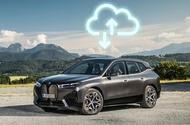Why Are Car Software Subscriptions Facing So Much Pushback?
If you’ve bought a new car in the last few years, you’ve probably noticed a shift. Automakers are increasingly trying to sell you more than just the vehicle itself—they’re pitching subscriptions for features that, not long ago, would have come standard or as a one-time upgrade. Think heated seats, advanced navigation, or even extra horsepower. But here’s the thing: most drivers aren’t buying it. Literally.
Recent industry surveys and expert commentary paint a clear picture. According to the latest S&P Connected Car survey, global willingness to pay for connected car services has dropped sharply—from 86% in 2024 to just 68% in 2025. That’s a big swing in a single year. Even more telling, the number of people who say they pay for no connected services at all is up by 5%, despite more cars than ever being packed with tech.
So, what’s behind this resistance? For many, it’s the feeling of being nickel-and-dimed. Imagine shelling out tens of thousands for a new vehicle, only to be told you’ll need to cough up another monthly fee to unlock features your car already has. As Andrew Bergbaum, a global automotive leader at AlixPartners, puts it, “People wonder when they’re paying Y thousand a month for a vehicle why they should spend more for the same hardware they’ve paid for.” That frustration is real—and it’s widespread.
Are Automakers’ Subscription Dreams Fading?
A few years ago, car companies saw software subscriptions as their next gold rush. Stellantis, for instance, once projected €20 billion in annual software revenue by 2030. But reality is setting in. Stellantis has since walked back several ambitious promises, including plans for advanced self-driving features that would have been sold as pay-per-use upgrades.
The idea was simple: unlock new levels of autonomy or convenience for a fee, perhaps just for a long trip or a busy week. But the technical challenges of autonomy are proving tougher than expected, and customers aren’t keen on paying extra for capabilities that require additional hardware anyway. If the sensors and computers aren’t there, no amount of software can bridge the gap.
BMW and Mercedes-Benz have had some success with their subscription models, but even they find most customers prefer to pay upfront for optional packages when ordering a new car. Take the BMW iX3: you can add Parking Assistance Professional for a one-time fee, which includes extra cameras and sensors. It’s a clear, tangible upgrade—no monthly surprises.
Why Is the Cost of Advanced Car Tech Dropping?
Here’s an interesting twist: the price of advanced driver-assistance systems (ADAS) is falling fast. Why? Because the industry is moving toward “software-defined vehicles,” where a handful of powerful computers manage everything, and sensors themselves are getting cheaper. Nakul Duggal, head of automotive at Qualcomm, notes that once you have the right sensors and computing power, the cost of the hardware becomes well-defined and can be spread across more vehicles.
Andrew Bergbaum agrees, pointing out that as domain controllers replace individual chips in each sensor, costs plummet. The outcome? It’s becoming more practical—and affordable—for automakers to simply include these features in every car, rather than making them expensive add-ons.
How Are Global Markets Responding to Car Subscriptions?
Not all regions see car subscriptions the same way. In China, for example, 32% of car buyers are open to paying for connected features, compared to 35% in the US and 29% in the UK. But here’s the kicker: over half of Chinese drivers use these services as part of a free trial, far more than in Europe or the US. Only 10% of Chinese drivers use no connected services at all, while that figure jumps to 45% in the UK and 54% in France.
Why the difference? Price wars in China mean automakers often throw in these services for free, at least initially. As Chinese brands expand into Europe, they’re likely to bring this strategy with them—potentially making it even harder for European carmakers to charge for subscriptions.
Meanwhile, the US market is more receptive. General Motors, for instance, reported $4 billion in deferred revenue from services like Super Cruise (a hands-free driving system) and OnStar connectivity. Ford’s BlueCruise and Tesla’s Full Self-Driving upgrades are also seeing strong uptake. But as Johann Jungwirth, head of autonomous vehicles at Mobileye, points out, “In Europe, people prefer to pay more for the hardware and have the services included. They pay more attention to how much they spend on a monthly basis. In the US, everyone has three or four credit cards and they don’t pay too much attention. Europeans are much more conservative.”
Is There a Path Forward for Car Software Subscriptions?
The future of car software subscriptions is anything but certain. As hardware costs drop and competition heats up—especially from Chinese automakers willing to bundle features for free—the old dream of endless subscription revenue is looking shaky. Customers are clearly signaling that they want transparency and value, not a never-ending stream of microtransactions.
For automakers, the lesson is clear: if you want drivers to pay for extra features, make sure those features are genuinely new, useful, and not already sitting dormant in the car they just bought. Otherwise, expect more pushback—and maybe a rethink of the whole subscription strategy.
At the end of the day, drivers want to feel like they’re getting a fair deal. That’s not too much to ask. And as the industry adapts, those who listen to their customers will be the ones who come out ahead.

